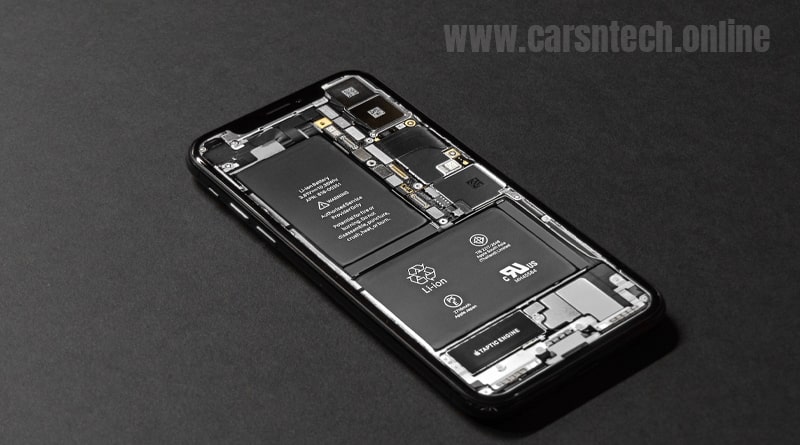Lithium-Ion Batteries: Advancements in Energy Storage Technology
Introduction
Lithium-ion batteries, a revolutionary advancement in energy storage technology, have significantly impacted the modern world, powering a wide array of portable consumer electronics and electric vehicles. Their exceptional attributes, including high energy density, power-to-weight ratio, and low self-discharge, have made them indispensable in our daily lives. In this comprehensive article, we delve into the intricate workings of lithium-ion batteries, explore their diverse applications across industries, analyze the various types available, and investigate the historical milestones that led to their development. Furthermore, we’ll examine the crucial aspect of safety considerations and recycling efforts, as well as explore ongoing research and future directions in the pursuit of even more efficient and sustainable energy solutions.
Understanding the Science Behind Lithium-Ion Batteries
To grasp the marvel of lithium-ion batteries, one must comprehend the fundamental electrochemical reactions that power these energy storage wonders. These batteries harness the reversible reduction of lithium ions to store energy efficiently. The anode, commonly composed of graphite, serves as the lithium-ion host during the discharge process. On the other hand, the cathode, typically made of metal oxide, acts as the host during the charging phase. A critical component, the electrolyte, consists of a lithium salt dissolved in an organic solvent, facilitating the movement of lithium ions between the anode and cathode.
Applications and Impact of Lithium-Ion Batteries
The impact of lithium-ion batteries is felt across a wide range of applications, revolutionizing the world of consumer electronics and automotive industries. The rise of smartphones, laptops, and other portable gadgets owes much to the high energy density and efficiency of these batteries. Furthermore, electric vehicles (EVs) owe their viability to the adoption of lithium-ion batteries, driving the transformation toward sustainable transportation solutions. Beyond consumer applications, these batteries have found utility in grid-scale energy storage, bolstering the integration of renewable energy sources, and serving critical roles in military and aerospace operations.
Exploring Different Types of Lithium-Ion Batteries
The diversity of lithium-ion batteries stems from the various active materials used in their construction. Intercalation compounds are prevalent in commercial cells, with graphite as the anode material. Researchers are also exploring silicon-carbon composite anodes for improved performance. Moreover, lithium polymer batteries, featuring a polymer gel as the electrolyte, offer high energy density and have become popular in handheld electronic devices. Additionally, advanced variants like lithium iron phosphate, lithium manganese oxide, and lithium nickel manganese cobalt oxide exhibit longer lifespans and superior rate capability, making them prominent in the electrification of transport and renewable energy storage.
Historical Evolution of Lithium-Ion Batteries
The remarkable journey of lithium-ion batteries traces back to the groundbreaking work of M. Stanley Whittingham, who introduced intercalation electrodes in the 1970s. Building upon Whittingham’s foundation, John Goodenough played a pivotal role by employing lithium cobalt oxide as a cathode material in the 1980s. Finally, Akira Yoshino’s groundbreaking development of a carbonaceous anode in 1985 laid the groundwork for the modern lithium-ion batteries we use today.
Safety First: Addressing Challenges and Recycling Initiatives
While lithium-ion batteries have transformed modern living, safety concerns have been paramount. Flammable electrolytes have raised the risk of overheating and fires in damaged or improperly charged batteries. However, significant strides have been made to enhance safety and eliminate these hazards, including the development of lithium-ion all-solid-state batteries. Furthermore, the responsible recycling of spent batteries is imperative to mitigate environmental impacts and recover valuable materials. Initiatives like the Lithium-Ion Battery Recycling Prize, supported by the U.S. Department of Energy, strive to develop efficient and sustainable solutions for battery recycling.
Future Prospects: Ongoing Research and Innovations
The future of lithium-ion batteries remains promising, with ongoing research focused on unlocking their full potential. Researchers seek to extend battery lifespan through innovative approaches, while simultaneously increasing energy density to meet the escalating demands of modern technology. Safety advancements and cost reduction efforts are also being pursued, and the quest for rapid charging technologies continues to push the boundaries of battery performance.
Li-ion Battery Life Span: Understanding Degradation and Mitigations
Lithium-ion batteries have become a vital energy storage solution, powering our smartphones, laptops, electric cars, and renewable energy systems. As these batteries play an increasingly significant role in our lives, understanding their life span and degradation mechanisms becomes crucial. In this article, we delve into the complex factors affecting the life span of lithium-ion batteries, explore the various degradation processes, discuss the impact of temperature and charge levels, and uncover the ongoing research aimed at mitigating these challenges.
Defining Li-ion Battery Life Span
The life span of a lithium-ion battery is a critical aspect that determines its usefulness in various applications. Manufacturers often specify cycle life, which indicates the number of full charge-discharge cycles required for the battery’s capacity to reach 80% of its rated capacity. However, calendar life provides a more comprehensive representation as it considers both active cycling and inactive storage periods. Additionally, researchers use cumulative discharge, measuring the total charge delivered by the battery during its entire life or equivalent full cycles, to account for real-life usage scenarios that do not always involve full charge-discharge cycles.
Factors Influencing Battery Degradation
Several stress factors contribute to lithium-ion battery degradation. Temperature is a key determinant, as degradation accelerates in high-temperature or low-temperature environments. Discharge and charge currents, as well as the depth of discharge, also impact the battery’s life span. It is essential to consider these factors collectively to develop effective strategies for prolonging battery life and optimizing performance.
Common Degradation Mechanisms
Lithium-ion batteries undergo various degradation processes, which can occur during cycling, storage, or continuously throughout their life. Solid Electrolyte Interface (SEI) growth is a common mechanism that results in the irreversible trapping of Li+ ions, leading to capacity loss and increased cell resistance. Lithium metal plating, another significant concern, causes loss of cyclable charge, internal short-circuiting, and possible ignition. Moreover, the dissolution, cracking, exfoliation, and volume changes of electroactive materials during cycling contribute to capacity and power fade. Structural degradation of cathode materials, such as Li+/Ni2+ cation mixing in nickel-rich materials, can also lead to voltage fade and reduced cyclable charge.
Temperature and Aging: Experimental Insights
Temperature plays a vital role in battery aging, with elevated temperatures accelerating degradation. Studies conducted at 50-60 °C have revealed significant cyclable charge loss within 1-2 years. However, at 25 °C, degradation follows a similar pathway, but at half the speed. Lithium-ion batteries with titanate anodes exhibit longer life spans, lasting over 5000 cycles, as they avoid SEI growth. However, other degradation mechanisms manifest after extended storage, highlighting the need for comprehensive solutions.
Ongoing Research and Mitigations
Scientists and researchers are actively working on innovative approaches to mitigate lithium-ion battery degradation. Advanced imaging and model analysis offer deeper insights into degradation mechanisms and potential mitigations. Strategies for enhanced cell degradation management, including optimized charge-discharge profiles and thermal management systems, are being explored. Furthermore, innovations in battery chemistry and materials hold promise for extending battery lifespan and improving overall performance.
Conclusion
Lithium-ion batteries have truly revolutionized the world of energy storage, becoming an indispensable part of modern life. Their versatility, efficiency, and environmental benefits make them an ideal choice for various applications, from powering our gadgets to accelerating the adoption of clean energy solutions. As research continues to unlock new innovations and overcome challenges, lithium-ion batteries are poised to play an even more significant role in shaping the future of sustainable energy systems. Understanding the life span and degradation processes of lithium-ion batteries is vital to harnessing their full potential in various applications. By considering factors like temperature, charge-discharge profiles, and ongoing research advancements, we can develop sustainable and efficient energy storage solutions for a greener future.
FAQs
- How do lithium-ion batteries compare to other battery technologies? Lithium-ion batteries outperform many other battery technologies in terms of energy density, efficiency, and lifespan, making them highly sought after for numerous applications.
- Can lithium-ion batteries be used in renewable energy storage? Yes, lithium-ion batteries are widely used in renewable energy storage systems, facilitating the integration of clean energy sources into power grids.
- Are there any limitations to lithium-ion batteries? Although lithium-ion batteries offer numerous benefits, challenges include safety concerns, limited lifespan, and cost considerations. Researchers are actively working to overcome these limitations.
- Can battery degradation be reversed or prevented entirely? While some degradation is inevitable, proper storage, optimized charging, and advanced materials can slow down the process and extend battery life.
- Do all lithium-ion batteries exhibit the same degradation patterns? Different battery chemistries and compositions may experience varying degradation mechanisms, necessitating tailored solutions for each type.
- How can users prolong the life span of their lithium-ion batteries? Users can take measures like avoiding extreme temperatures, using moderate charge-discharge currents, and minimizing deep discharges to enhance battery longevity.
- Are there any alternatives to lithium-ion batteries with better life spans? Researchers are exploring alternative battery technologies, such as solid-state batteries, which have the potential for longer life spans and improved safety.
- What role do battery management systems (BMS) play in mitigating degradation? Battery management systems help monitor and regulate various parameters, optimizing battery performance and preventing adverse degradation effects.

